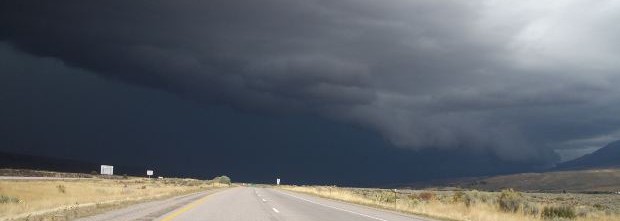
Unlike hurricanes, which can be tracked days in advance of making landfall, tornadoes can appear suddenly, allowing only a few hours for warnings of deadly storm conditions to be issued. Occasionally, tornadoes develop so rapidly that little, if any, advance warning is possible. And while the path of a tornado is far narrower than that of a hurricane, tornadoes can be more destructive to homes and businesses.
Fortunately, companies can take steps to help protect people, property and business income. The key factors are preparedness, vigilance and rapid response to dangerous conditions.
How to help minimize injuries, property damage and business losses:
1. Plan in advance to protect people.
Preparedness is essential to helping protect people in an emergency situation.
Some of the key elements of a tornado safety program include:
• Identifying the safest areas in a building so employees know where to congregate in the event of a warning;
• Designating the roles and responsibilities of supervisors and employees, including the appointment of a tornado warden (typically the same person as the fire warden);
• Practicing for an event with tornado drills; and
• Posting signs in public buildings to direct customers and visitors to safe areas.
The safest areas for employees to seek shelter typically include basements, hallways, interior stairwells and small internal first floor rooms. For businesses in tornado-prone areas, consider constructing a tornado-hardened safe room.
2. Take actions to help minimize property damage.
Few structures can survive a direct hit by an EF5 tornado, but most tornadoes are far less powerful, and much of the damage is caused by debris hurled by the storm rather than direct damage from high winds in the vortex. Some practical steps to help minimize property damage from a tornado include:
• Securing outdoor gear and outbuildings to prevent them from becoming airborne missiles;
• Reinforcing vulnerable areas of a building, such as adding supports to garage doors and bracing and strapping the roof;
• Housing servers and other vital equipment in protected areas of a building, preferably in tornado-resistant server rooms; and
• For new construction, working with an architect or contractor to incorporate wind mitigation techniques and high wind-rated products.
3. Prepare in advance to help maintain business continuity.
Continuity and disaster recovery planning is essential to help businesses bounce back after any sort of catastrophe, not just tornadoes. However, the potential for total destruction of an individual property from a tornado, combined with likelihood of severe damage to local infrastructure, makes a well-conceived continuity and disaster recovery plan all the more essential.
Specific elements of continuity and disaster recovery plans will vary by size and type of business, but questions to address typically include:
• How employees will communicate;
• Where employees will work;
• How manufacturing and other critical business operations will continue until a damaged building is repaired or replaced;
• How data and information technology will be restored; and
• How supply chain logistics will be maintained.
4. Monitor the weather when threatening.
Forecasters can sometimes identify potentially deadly weather systems forming more than a day in advance of tornadoes being spawned, and Doppler radar significantly can improve the timeliness and accuracy of spotting tornadoes that have formed or are in the process of forming. However, advance warnings are not helpful if they are not heard and heeded. The National Weather Service provides local weather broadcasts over a radio network called NOAA Weather Radio from over 1,000 different transmitters nationwide. Businesses should buy a NOAA Tone Alert Weather Radio, and the tornado warden or other designated employee should monitor information from the National Weather
Service as well as from local radio and television stations.
5. Take warnings seriously and act quickly.
Most often, the aftermath of a tornado warning is a funnel cloud producing little or no damage, or sometimes even no tornado at all. As a result, many people become complacent and underestimate the danger inherent in a severe weather situation. Weather service officials in some areas are now enhancing warning communications to convey a sense of urgency for extreme events. For example, one warning in advance of a powerful EF3 tornado proclaimed: “This is a life-threatening situation. You could be killed if not underground or in a tornado shelter.” But even in the absence of enhanced communications, every warning should be taken with the utmost seriousness, and appropriate measures should be taken immediately to protect lives and property.

For more resources to help reduce your risk visit bit.ly/1gY8mhH.
Topics:






